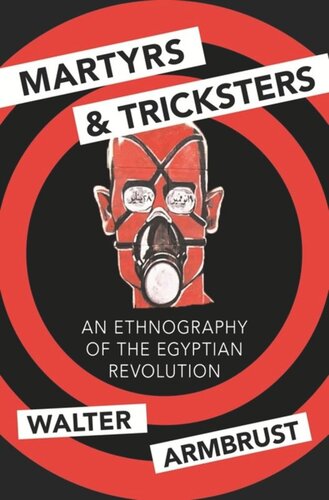

Most ebook files are in PDF format, so you can easily read them using various software such as Foxit Reader or directly on the Google Chrome browser.
Some ebook files are released by publishers in other formats such as .awz, .mobi, .epub, .fb2, etc. You may need to install specific software to read these formats on mobile/PC, such as Calibre.
Please read the tutorial at this link: https://ebookbell.com/faq
We offer FREE conversion to the popular formats you request; however, this may take some time. Therefore, right after payment, please email us, and we will try to provide the service as quickly as possible.
For some exceptional file formats or broken links (if any), please refrain from opening any disputes. Instead, email us first, and we will try to assist within a maximum of 6 hours.
EbookBell Team

0.0
0 reviewsAn anthropologist and longtime resident of Cairo, Armbrust draws on anthropological theory to make sense of the 2011 political uprising that began in Cairo’s Tahrir Square.
An important look at the hopeful rise and tragic defeat of the Egyptian Revolution of 2011
The Egyptian Revolution of 2011 began with immense hope, but was defeated in two and a half years, ushering in the most brutal and corrupt regime in modern Egyptian history. How was the passage from utmost euphoria into abject despair experienced, not only by those committed to revolutionary change, but also by people indifferent or even hostile to the revolution? In Martyrs and Tricksters, anthropologist and Cairo resident Walter Armbrust explores the revolution through the lens of liminality—initially a communal fellowship, where everything seemed possible, transformed into a devastating limbo with no exit. To make sense of events, Armbrust looks at the martyrs, trickster media personalities, public spaces, contested narratives, historical allusions, and factional struggles during this chaotic time.
Armbrust shows that while martyrs became the primary symbols of mobilization, no one took seriously enough the emergence of political tricksters. Tricksters appeared in media—not the vaunted social media of a “Facebook revolution” but television—and they paved the way for the rise of Abd al-Fattah al-Sisi. In the end Egypt became a global political vanguard, but not in the way the revolutionaries intended. What initially appeared as the gateway to an age of revolution has transformed the world over into the age of the trickster.
Delving into how Egyptians moved from unprecedented exhilaration to confusion and massacre, Martyrs and Tricksters is a powerful cultural biography of a tragic revolution.